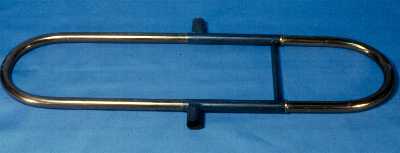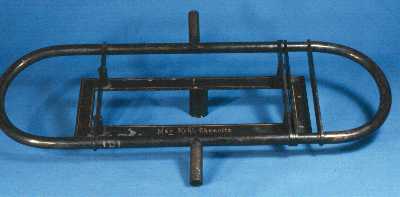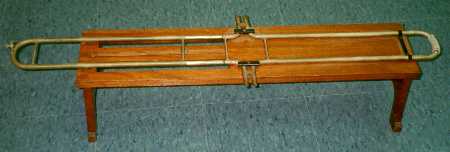Acoustic Interferometers
Acoustic interferometers operate by dividing the signal
into two parts, which are sent on paths of different lengths and then recombined.
If the path difference is an even number of wavelengths, the waves interfere
constructively when they rejoin, and a loud sound is heard. However, if
the path length difference is a half-odd number of wavelengths, the signals
are 180 degrees out of phase when they combine, and a minimum amplitude
of sound is the consequence.
The three interferometers below are similar. The acoustic
signal is introduced at one side, and travels to the other side through
the tubes on the right and the left. One of these tubes telescopes; when
the tube is pulled out by a half wavelength, the path length increases
by an entire wavelength. The sound can thus go from a maximum to a maximum,
or a minimum. Pulling the tube out by a quarter wavelength increases the
path length by a half wavelength, thus changing a maximum to a minimum
or a minimum to a maximum. The sound can be produced by a tuning fork (of
known frequency), and picked up by a funnel connected to the apparatus
by a rubber tube. The maxima and minima are detected by using a rubber
tube to lead the signal to the ear of the experimenter. The Kohl instrument
at Miami University cost 27 marks in 1900.
 |
St. Mary's College in Notre Dame, Indiana
|
|
Miami University in Oxford, Ohio
|
 |
 |
University of Cincinnati
|